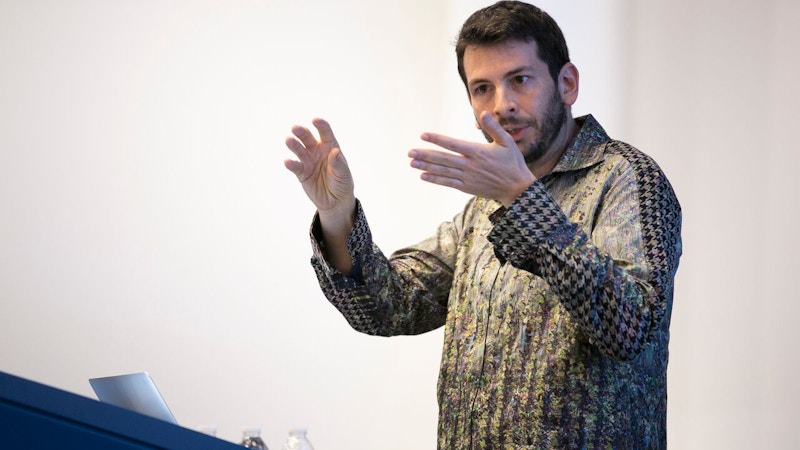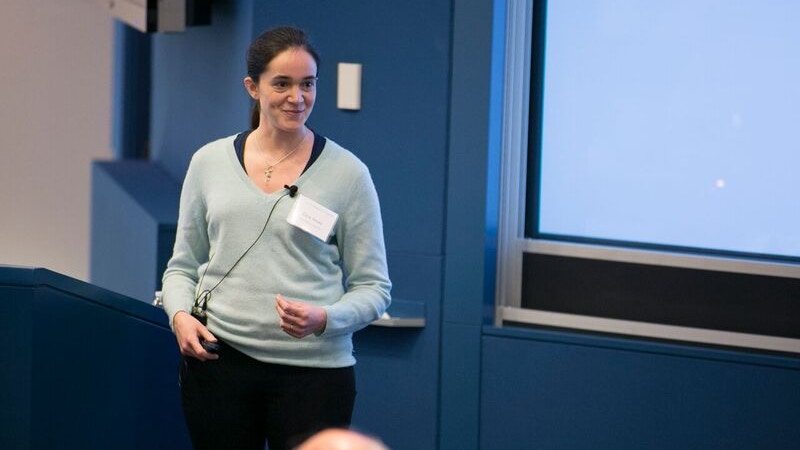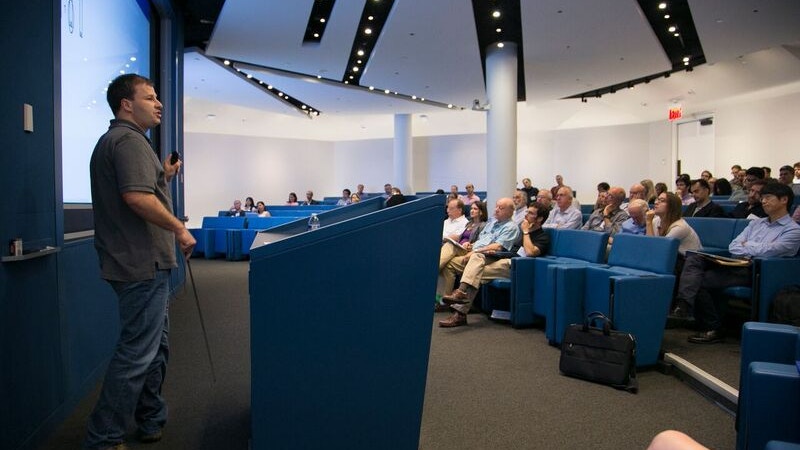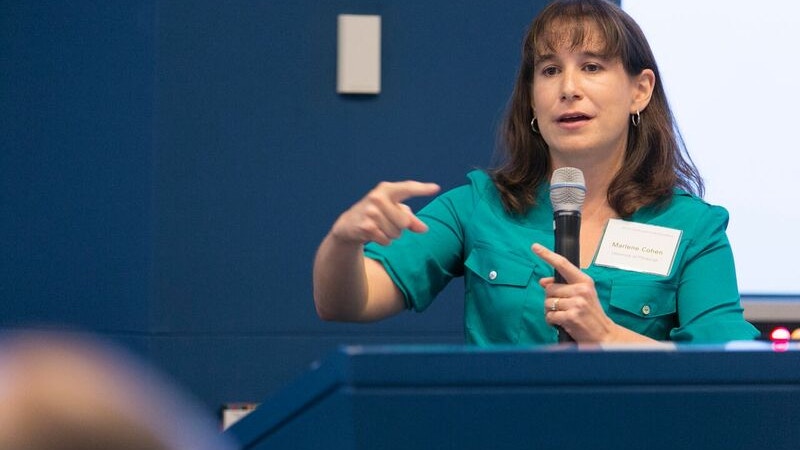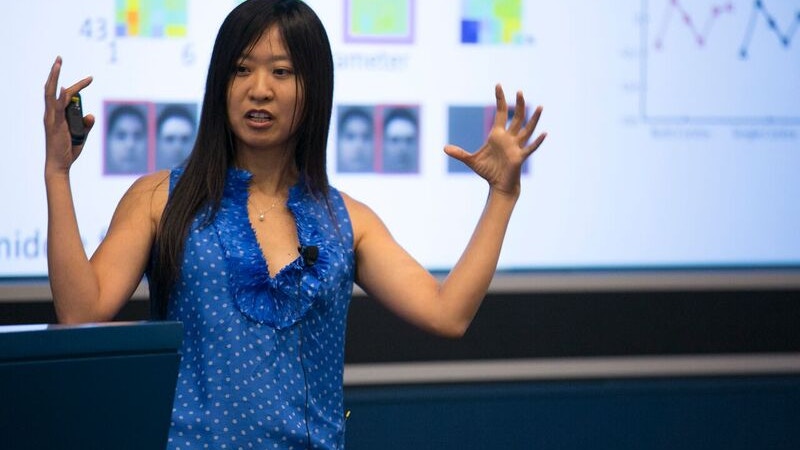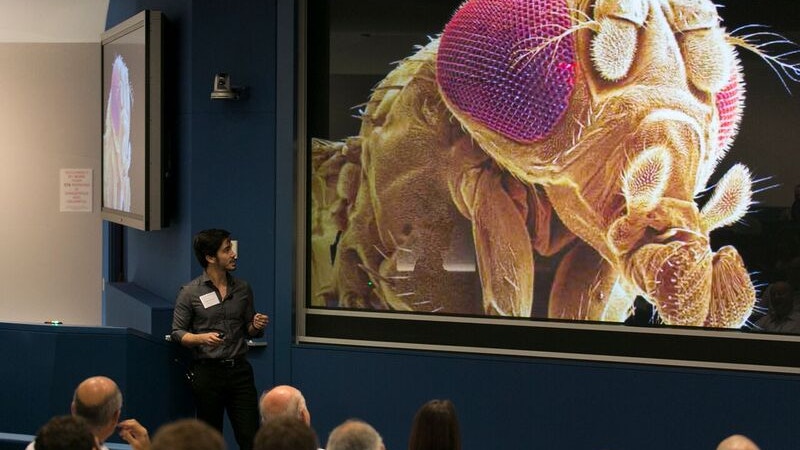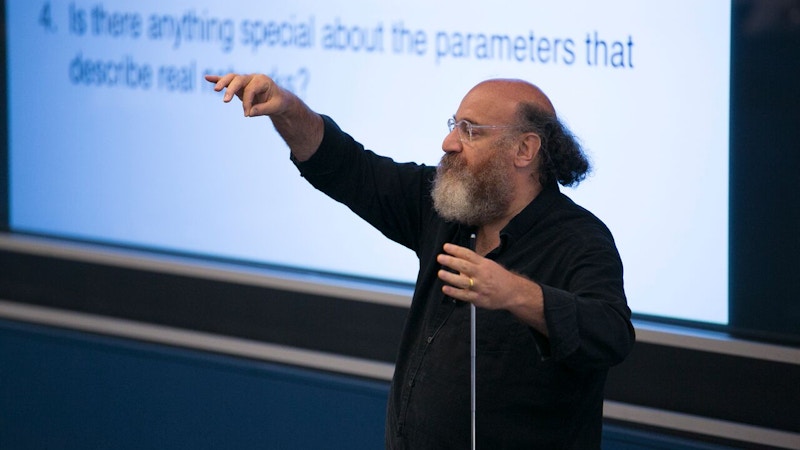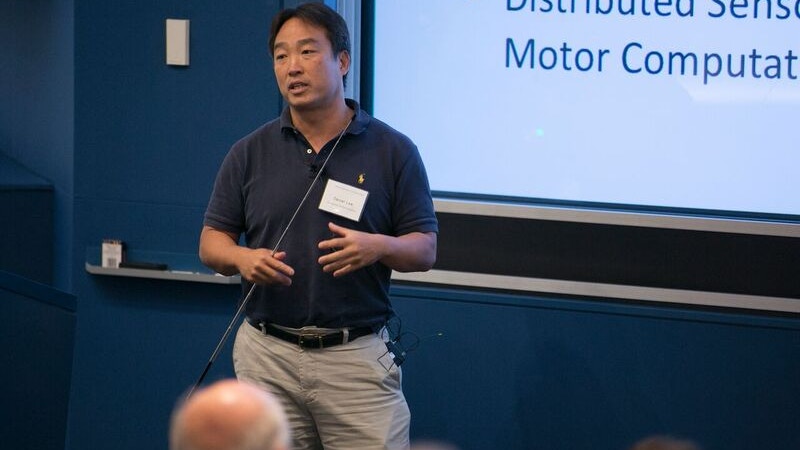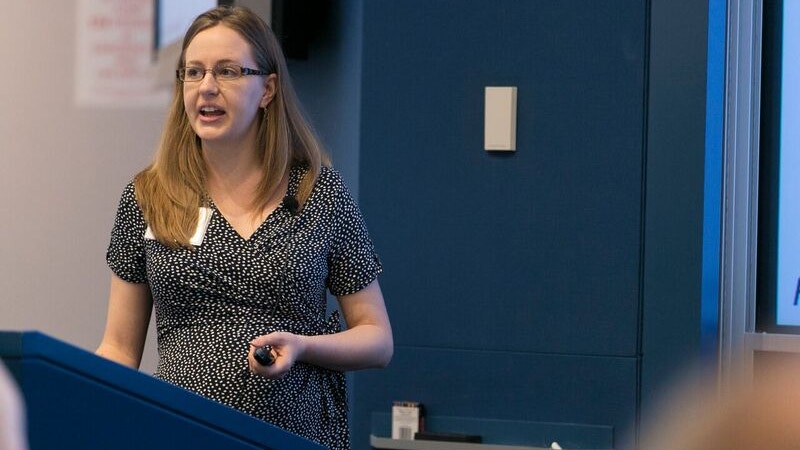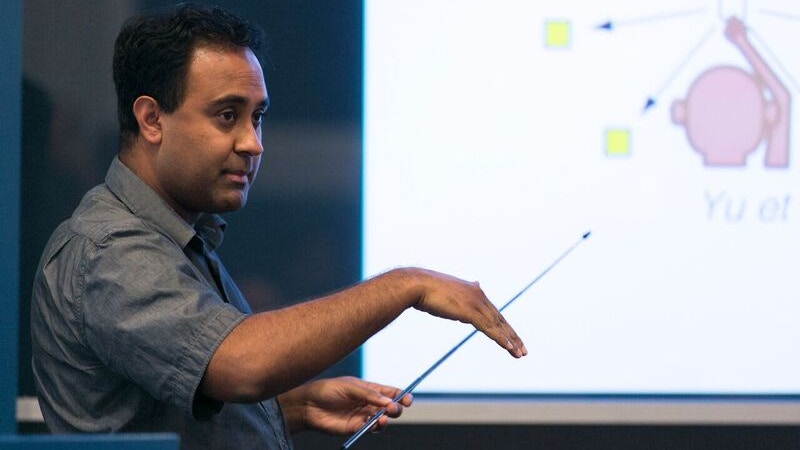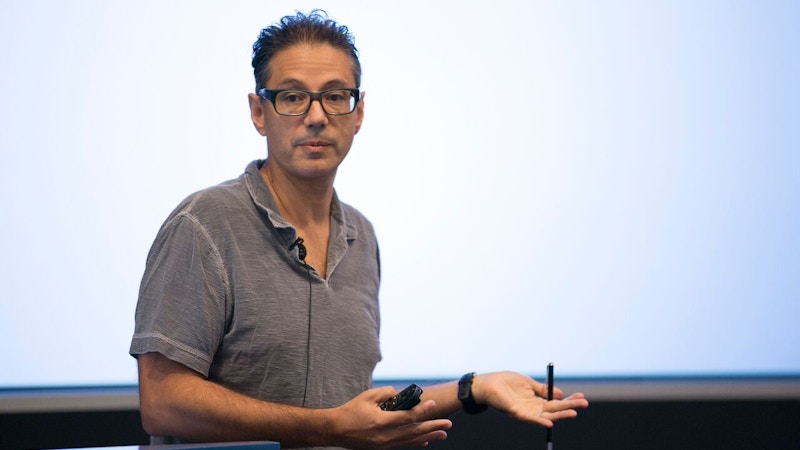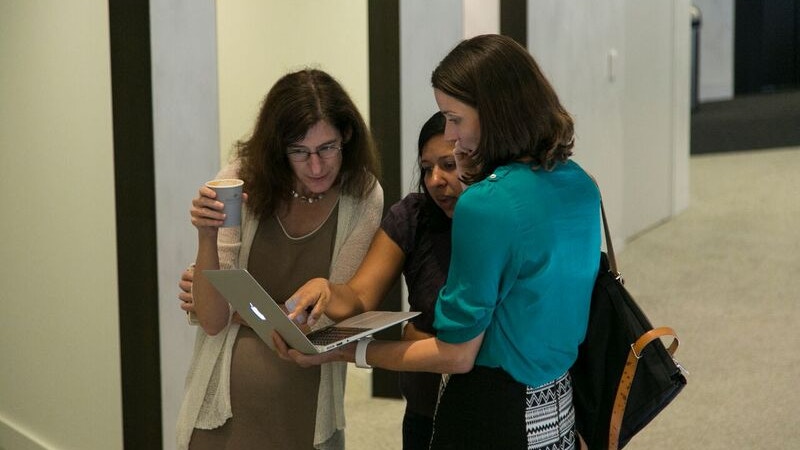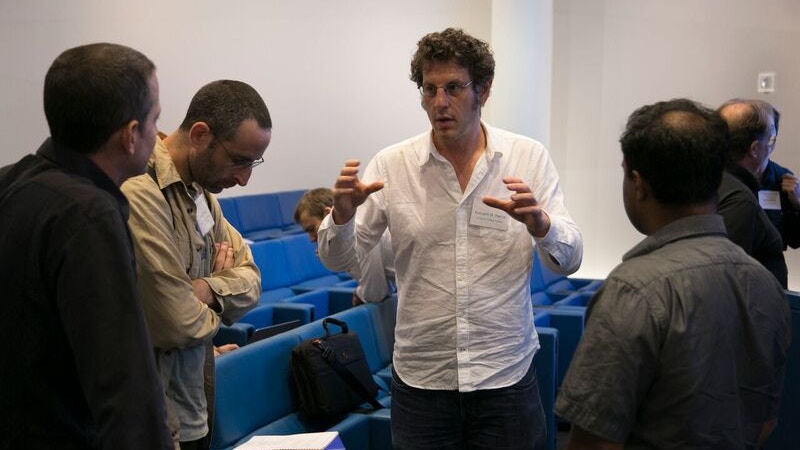Global Brain Meeting Explores the Puzzle of Cognition
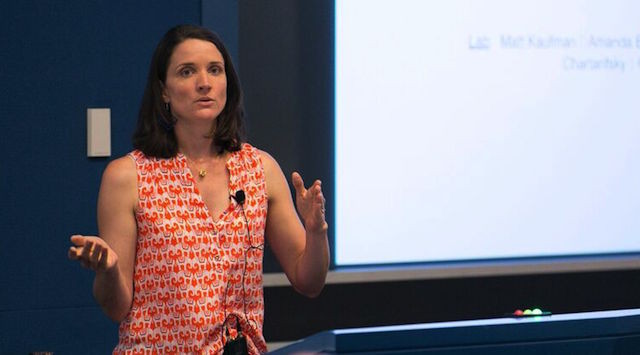
What goes on in the brain to make us think and act the way we do? To address that fundamental question, researchers from various disciplines, including neuroscience, biology, math, physics and engineering, gathered in New York City for the first annual meeting of the Simons Collaboration on the Global Brain (SCGB) in September.
The initiative, launched in 2014, aims to uncover the hidden mechanisms that combine to give rise to cognition. Psychologists have developed many theories to explain how internal processes, such as emotion and memory, interact with other brain mechanisms to influence thinking and decision making. The limitations of traditional tools have meant that these processes have been practically impossible to observe directly — until now. Recent advances in technology, such as calcium imaging, single-cell-resolution recording techniques and optogenetics, coupled with sophisticated analytical methods that can make sense of the large amounts of data captured by these technologies, are enabling scientists to chip away at the puzzle of cognition. At the three-day meeting, SCGB researchers described the progress made by the collaboration’s 163 investigators and postdoctoral researchers — a mix of theorists and experimentalists — who represent 51 projects exploring 19 brain areas and using seven animal models, including monkeys, mice, flies and zebrafish.
At the meeting, researchers explained how they used the advanced tools and models to test long-standing ideas. For instance, one question that has divided philosophers, psychologists and neuroscientists for decades is whether there is an initial state of preparation in voluntary movement. In other words, do you have to think about moving your arm before you move it? Mark Churchland of Columbia University and his colleagues explored this question using rhesus monkeys trained to reach for a small target on a touch screen to receive a juice reward. Specifically, the scientists collected readings from electrodes implanted in the monkeys’ brains under three different conditions. In the first, called a cue-initiated condition, the monkey reached only when explicitly cued to do so by the appearance of the target. In the second, or self-initiated condition, the reward size grew with time, and the monkey chose when to reach for the target: the longer it waited, the bigger the reward. Finally, in the quasi-automatic condition, the target moved away rapidly after it appeared, prompting the monkey to react immediately, with no time for contemplation.
In analyzing their data, the researchers identified a distinct pattern of neural activity that always preceded movement, regardless of whether that movement was long-contemplated or reactive. This pattern of neural activity appears to be “a cog in the machinery that has to happen” before movement can begin, Churchland said. Many conference attendees later commented on the elegance of the experiment, which seems to prove that the brain does some preparatory work before it initiates a voluntary movement.
Other researchers explored brain activity under conditions that elicit behaviors seen in the wild. For instance, Markus Meister, David Anderson and Pietro Perona of the California Institute of Technology described a collaborative project examining the neural processes underlying innate defense mechanisms. Rather than demonstrating the “fight or flight” response humans and some other animals are known for, mice will either freeze or try to escape, Meister explained. The behavior the animal will choose generally depends on whether shelter is near. The researchers trapped mice in an arena and passed a shadow over them to simulate a hawk flying overhead, prompting the “freeze or flight” response. When a shelter was present in the arena, the mice would run to it about 50 percent of the time and freeze the other 50 percent. When a shelter was not present, the vast majority froze.
To examine the neural pathways involved in this behavior, the researchers silenced via ablation different groups of ganglion cells in the mice’s retina, called C and K cells, both of which project to major visual pathways in the brain. Silencing the C cells eliminated the freeze-or-flight response, whereas silencing the K cells did not. In both cases the animals could still see. “In the retina there already seems to be a subdivision of behavioral tasks,” Meister said.
The team then examined how internal states, such as anxiety in varying degrees, can impact behavior. The experiment drew from predator imminence theory, which states that as the threat of predation increases, the prey will typically change its defensive strategy, as Anderson explained. The researchers used direct optogenetic stimulation of specific neurons in the hypothalamus to activate the mouse’s defense system. At low stimulation the researchers observed avoidance behavior, at medium stimulation they saw freezing, and at high, the mouse would jump in an attempt to escape the cage. “There is some threshold defensive control,” Anderson said.
Drosophila fruit flies demonstrate similar patterns of behavior. “If some overhead threat passes once, twice, they don’t move. A third time, however, they scatter,” Perona said. Perona calculated the activation of the flight response in an equation that included an estimation of the combined likelihood of various threats, such as whether a predator is near, and a cost-benefit analysis taking into account factors such as the availability of food. By refining this equation over multiple animal models and situations, Perona said, it may eventually be possible to predict behavior.
This model, of course, is only a start. Cognition and behavior also incorporate past learning and memory, which are thought to help guide future decisions. “It happens in a flash. How does the brain do this?” asked Loren Frank of the University of California, San Francisco, during his presentation.
In the brain, memories are thought to reactivate a pattern of neural activity similar to the one that is activated during the experience itself. “An animal is in one place, but it looks like the animal is mentally traveling to where it was previously,” Frank said. But unlike the real event, memories seem to be massively time-compressed, like a video in fast-forward. Frank and his team identified these time-compressed patterns in the hippocampus, a structure known to be important in memory storage and retrieval. The patterns occur during events called ‘sharp-wave ripples,’ in which many cells fire together; these events were seen when rats were confronted with a spatial navigation task they had run before. In each event, a pattern of activity similar to that seen during an experience was replayed, but the replay happened about 20 times as fast as during the original experience.
To test whether these bursts of activity in the hippocampus are linked to memory retrieval in actual practice, Frank and his team stimulated a fiber bundle that disrupted the process and turned off the sharp-wave ripples in rats. They found that when they blocked the sharp-wave ripples, rats performed worse on the task. In a separate experiment, they also showed that a relationship exists between these events and correct decisions: Trials in which the animal made the right choice were preceded by more sharp-wave-related activity than trials where animals made a mistake.
In addition to activating cells in the hippocampus, memories engage neurons in other areas, especially in the frontal cortex, which is known to be involved in planning and decision making. Frank hopes to study what’s going on in the other areas of the brain and thinks the findings could lead to new ways to improve decision making.
Interspersed throughout the 16 speaker sessions, each lasting for about 30 minutes, were short ‘data blitzes,’ 29 lightning-round presentations of five to six minutes each. The concluding day had an extended blitz session, in which eight postdocs in a row described their research.
The interdisciplinary and collaborative nature of the research was evident throughout the meeting, as audience members peppered presenters with questions, offered insight, or gave constructive criticism based on their own research. After the meeting, several attendees talked about future collaborative projects. When asked about such opportunities, Frank reeled off a list of names of people he had already spoken to about sharing data or potentially working together. SCGB researchers should also benefit from new technologies now being developed in the initial phase of the National Institutes of Health’s BRAIN Initiative.
“I thought it was a great success,” said SCGB director David Tank, a molecular biologist at Princeton University, in a post-mortem after the last presentation concluded. “I think we have identified the real-world leaders in this area of research. That was evident in the quality of the talks and the groundbreaking research that was presented here today.”
Scenes from the meeting:
Blaise Agüera y Arcas, who works on machine intelligence at Google, gave the opening keynote address.
